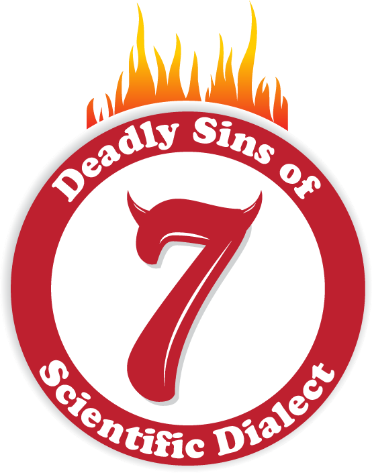Another Deadly Sins Recap, Part 3

Writing Tip Wednesdays is ending the year the way we started it: with the Deadly Sins.
This series was written by Writing Tip Wednesday reader Rick Hull. Rick has been a health communications specialist with the National Center for Chronic Disease Prevention and Health Promotion’s (NCCDPHP’s) Office of the Director for 36 years, many of them as a writer-editor. He is NCCDPHP’s clearance coordinator and branding ambassador, CDC’s logo-licensing and co-branding coordinator, and a reviewer in CDC’s system logos clearance.
His favorite quotation is “Great ideas are hogwash. Style and structure are the essence of great writing.” —Vladimir Nabokov, Lectures on Literature
Did you think there were really only seven deadly sins of scientific writing plus a wrap-up and two extras? Wrong! There’s one more. Here’s Rick Hull on dangling modifiers.
End-of-sentence tack-ons are the most popular type of misplaced modifier in scientific writing, but the most embarrassing kind is the dangling modifier. A dangler occurs at the beginning of a sentence. As usual, the rule of proximity can get you into trouble because the phrase will appear to modify the subject of the subsequent main clause.
Example:
As a baboon who grew up wild in the jungle, I realized that Wiki had special nutritional needs.
Revision:
I realized that Wiki, a baboon who grew up wild in the jungle, had special nutritional needs.
Example:
Using the Reed-Frost epidemic model, only 22%–65% of the secondary cases were likely to have had at least one person-to-person contact.
Revision:
The Reed-Frost epidemic model showed that only 22%–65% of the secondary cases were likely to have had at least one person-to-person contact.